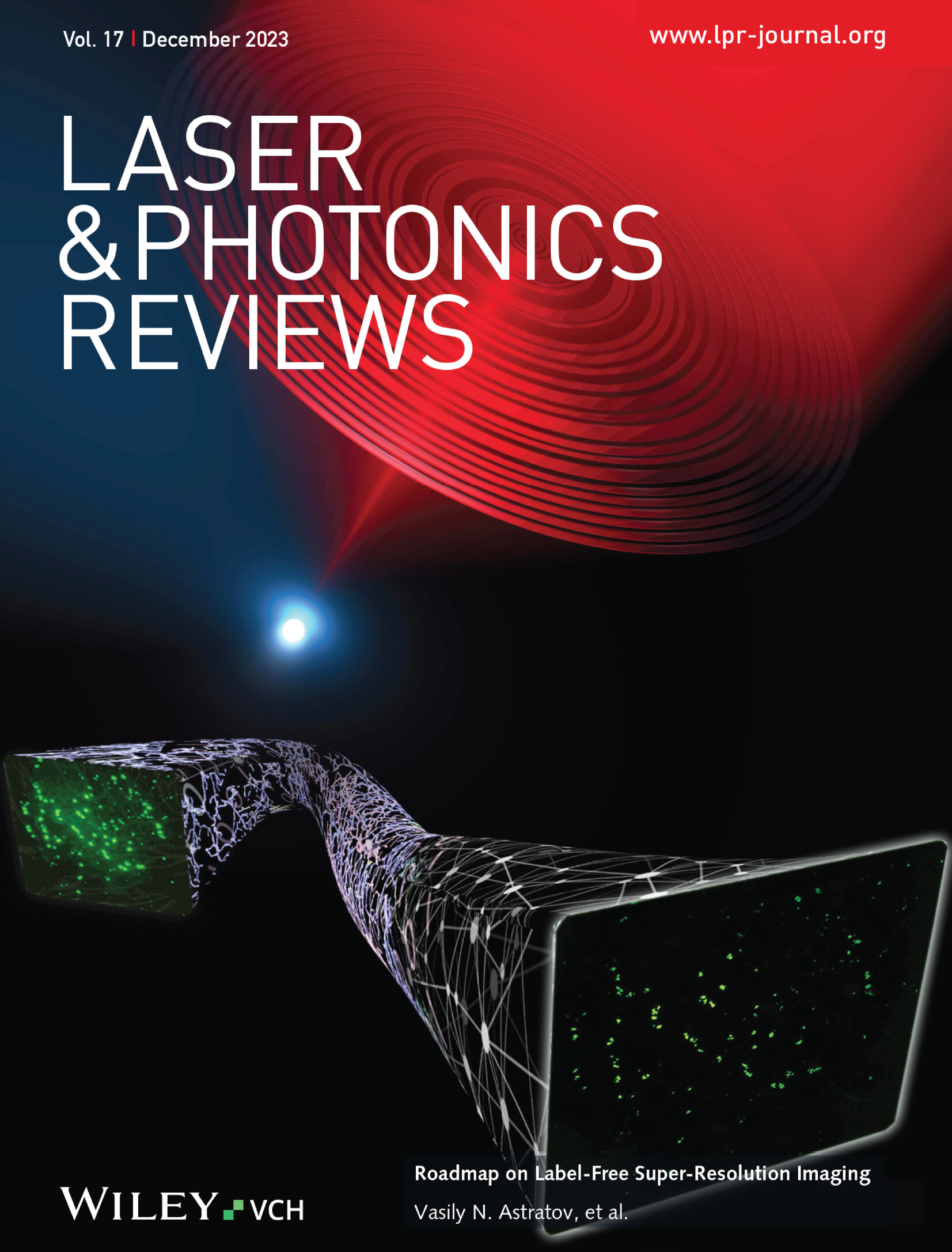利用刚性无机π共轭单位和可去质子化有机π共轭二聚体增强线性和非线性光学性质
IF 9.8
1区 物理与天体物理
Q1 OPTICS
引用次数: 0
摘要
非线性光学晶体的设计多年来一直吸引着化学家、材料科学家和物理学家的兴趣。有机-无机杂化π -π堆叠是设计高性能NLO晶体的有效方法。本文采用刚性无机π共轭单元(CO3和NO3,符号为π)和有机π共轭二聚体(双胍基团,符号为π^)进行叠加,通过π—π^相互作用得到NH[C(NH2)2]2(NO3)2和{N[C(NH2)2]2}2CO3化合物。两种化合物均表现出较强的线性光学特性:前者的透明度为318 nm,双折射为0.122@550 nm;后者和NLO效应(分别为3.5 × KH2PO4 (KDP)和5 × KDP)的透明度为258 nm,双折射率为0.232@550 nm。理论计算表明,强线性和NLO性质主要来源于多重氢键和π—π^堆叠的相互作用。有趣的是,去质子化的N[C(NH2)2]2有机π共轭二聚体比质子化的NH[C(NH2)2]2具有更高的极化率、各向异性和超极化率,从而提高了宏观线性和NLO性能。这为理解π -π堆叠提供了一个机会,并为提高材料的线性和NLO性能提供了一种新的策略。本文章由计算机程序翻译,如有差异,请以英文原文为准。

Exploiting Rigid Inorganic π-Conjugated Units and Deprotonatable Organic π-Conjugated Dimers for Enhanced Linear and Nonlinear Optical Properties
The design of nonlinear optical (NLO) crystals has captivated the interest of chemists, materials scientists, and physicists for many years. The organic–inorganic hybrid π–π stacking is an effective method to design high-performance NLO crystals. Herein, rigid inorganic π-conjugated units (CO3 and NO3, the symbol is π) and organic π-conjugated dimers (biguanide group, the symbol is π^) are employed for stacking, resulting in the compounds of NH[C(NH2)2]2(NO3)2 and {N[C(NH2)2]2}2CO3 through π--π^ interaction. Both compounds exhibit strong linear optical properties—transparency: 318 nm and birefringence: 0.122@550 nm for the former; transparency: 258 nm and birefringence: 0.232@550 nm for the latter—and NLO effects (3.5 × KH2PO4 (KDP) and 5 × KDP, respectively). Theoretical calculations reveal that strong linear and NLO properties mainly derive from the interactions of multiple hydrogen bonding and π--π^ stacking. Interestingly, deprotonatable N[C(NH2)2]2 organic π-conjugated dimers demonstrate higher polarizability anisotropy and hyperpolarizability than their protonated NH[C(NH2)2]2 counterparts, resulting in enhanced macroscopic linear and NLO performance. This offers an opportunity to understand π–π stacking and provides a new strategy for enhancing the linear and NLO properties of the material.
求助全文
通过发布文献求助,成功后即可免费获取论文全文。
去求助
来源期刊
CiteScore
14.20
自引率
5.50%
发文量
314
审稿时长
2 months
期刊介绍:
Laser & Photonics Reviews is a reputable journal that publishes high-quality Reviews, original Research Articles, and Perspectives in the field of photonics and optics. It covers both theoretical and experimental aspects, including recent groundbreaking research, specific advancements, and innovative applications.
As evidence of its impact and recognition, Laser & Photonics Reviews boasts a remarkable 2022 Impact Factor of 11.0, according to the Journal Citation Reports from Clarivate Analytics (2023). Moreover, it holds impressive rankings in the InCites Journal Citation Reports: in 2021, it was ranked 6th out of 101 in the field of Optics, 15th out of 161 in Applied Physics, and 12th out of 69 in Condensed Matter Physics.
The journal uses the ISSN numbers 1863-8880 for print and 1863-8899 for online publications.

 求助内容:
求助内容: 应助结果提醒方式:
应助结果提醒方式:


